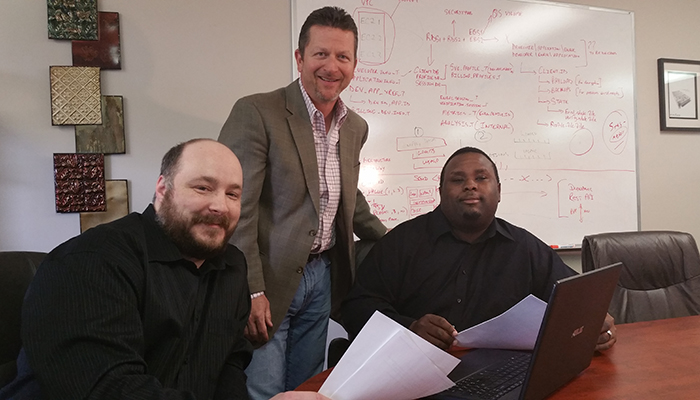
Originally developed by an Australian university in 2009, the technology behind ValidVoice was formally deemed too far ahead of its time.
“There wasn’t a market for biometrics at the time,” said David Vana, COO of ValidVoice. “The technology sat dormant for quite a few years, until recently.”
Omaha-based ValidVoice, LLC is a voice biometric technology that provides security for assets and information. The technology works by creating a voiceprint from a person’s natural speaking voice.
“We take a 60 second sample of a person’s conversational voice, identify the unique characteristics and then create a voiceprint,” said Vana.
It only takes ValidVoice about three to 10 seconds to authenticate a person’s voiceprint. The individual characteristics of a voice and the short authentication time make voiceprints very useful for security purposes.
Vana said that there is a number of different applications for the technology; however, right now the company is mainly targeting financial institutions.
“Security is an issue now more than ever as people conduct their financial and ecommerce transactions online,” said Vana. “Unlike other forms of security (passwords, pins, etc.), a biometric is unique to each person and cannot be stolen. Using a voiceprint along with another authentication factor creates a very highly secure multi-factor authentication system.”
Vana said that the convenience of a live voiceprint also lowers customer friction and transaction costs within call centers. Representatives no longer need to ask for a long list of authentication questions because the authentication happens live with the voiceprint.
“It doesn’t even need to be the same words or phrases to prove authentication,” said Vana. “[The authentication] comes from natural conversation.”
Long sales cycles and generating revenue
Besides focusing on where to use the technology, one of the biggest challenges for the team has been the sales cycles of the companies that ValidVoice is designed for.
“The sales cycles can take up to six to 12 months for these large financial institutions,” said Vana. “So it’s a long process before we’re actually generating revenue.”
Vana said that the team has all of the pieces in place and have a really good pipeline built up; it’s just a matter of just closing on a couple of their deals to gain funding for the company.
“We face the same challenges that all startups face,” said Vana. “Lack of capital is probably more of an acute challenge for us because of the length of the sales cycles and the types of customers that would most benefit from our technology.”
Currently ValidVoice only has one customer, Centrelink, the Australian government’s equivalent to our social security administration. In 2013, Centrelink reported that using ValidVoice as part of their fraud initiative saved over $450 million in that year alone.
“We’ve made some pretty important improvements to the technology, and we’re about ready to release our SaaS product which would allow many more companies to use the technology,” said Vana. “Right now the technology requires us to install the product on site each time we make a sale. The SaaS application will allow companies to access our technology using our API interface, which makes the initial cost of using our product much lower.”
Using voiceprints to protect data and the transaction process
The team is also excited to release applications that would allow customers to use their voice instead of a token to gain access to a physical space. The technology could also benefit password reset operations.
“We have a password reset product that virtually eliminates fraud,” said Vana. “One of the most exciting things is that while the voice biometric protects assets for the financial institution, there’s still an issue of security during the transaction process, and we have a complete solution.”
Vana explained that the threat of having a credit card number or pin getting exposed is virtually eliminated by using ValidVoice.
“We have a tokenization product that is currently in development and will be completed in about three months, which will protect that information during the transaction process,” said Vana. “So rather than passing that credit card information you pass a token that represents the information.”
Vana explained that ValidVoice offers a complete solution for transaction security.
“We have a full security solution for the data at rest as well as the information during that entire transaction process,” said Vana.
What’s next for ValidVoice
Looking to the future, Vana said that the team hasn’t focused on marketing the technology just yet.
“We’re primarily working on refining the technology and developing the enterprise premise solution into a SaaS solution as well as an OEM solution,” said Vana.
The team plans to reintroduce the technology to the market after building capital to execute sales and marketing initiatives.
“There are some amazing applications for the technology within financial security, call centers, healthcare and homeland security,” said Vana. “But before we get there we need to let people know who we are and what we’re about.”





2 responses to “ValidVoice brings voiceprints to the future of cybersecurity”
how do you prevent against recordings being replayed?
How is this differentiated from Microsoft’s offering? https://www.microsoft.com/cognitive-services/en-us/speaker-recognition-api